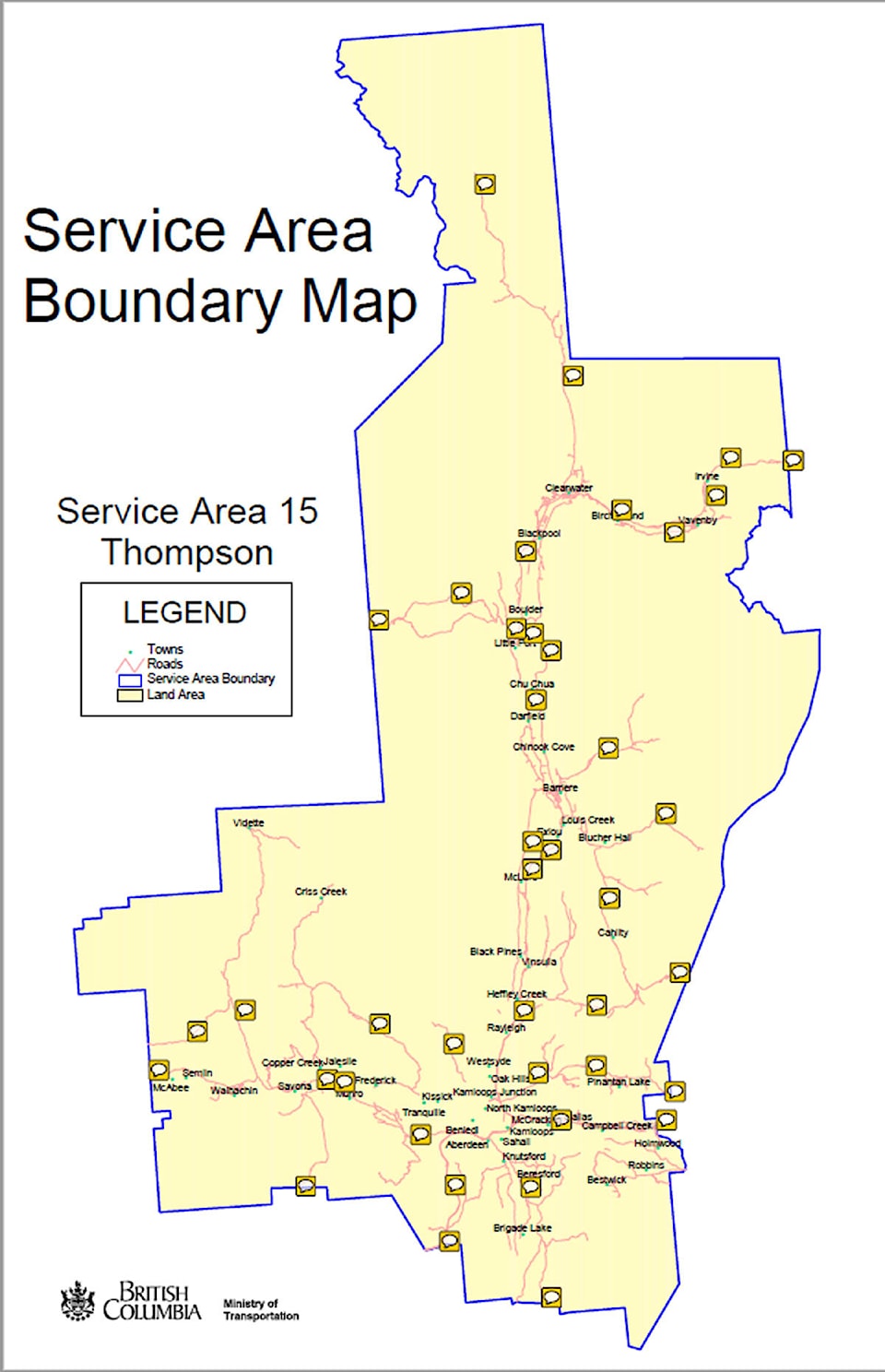On Nov. 21, Argo Road Maintenance held a winter awareness meeting at the Little Fort Hall for those in the Barriere through Clearwater area. Justin van Iterson, the operations manager at Argo, headed the meeting and dispersed the following information to attendees. Argo maintains 4400 lane kilometres of road from Kamloops to Clearwater, using 30 pieces of snow removal equipment, from plow trucks to sanders. This is mostly just the highways, as they have an agreement in place with the City of Kamloops, and the Districts of Barriere and Clearwater. In these agreements, road maintenance is exchanged on portions of roads that fall on the edge of City and District boundaries. For the majority of the City of Kamloops and Barriere and Clearwater, maintenance is handled either by the City/Districts directly, or by their subcontractors. In and around Kamloops, you may see Argo “gang plowing” - that is, plowing multiple lanes at the same time. They only do this where there are stretches of at least two lanes in a given direction. Out in the Barriere and Clearwater areas, there aren’t many areas of the roadways that allow for this. One thing Argo will be doing this year, is using a salt brine (liquid) on the roads in the Barriere and Clearwater areas, similar to what they’ve been using in the Kamloops area for the last several years. Depending of weather conditions, Argo may use rock salt, the salt brine, calcium chloride (also a liquid), or a sand/salt mix. Each has their own advantages and limitations, and will be chosen with weather conditions in mind. Roads are classified on a priority basis (A, B, C, D, E and F) based on the number and types of vehicles observed through traffic counts. Main highways are A. This classification is the highest priority. Argo will do them first, then move out to do school bus routes and main secondary roads, followed by residential rural roads. Van Iterson stressed that it is important for drivers to give the plow trucks plenty of room to do their work. When a truck is busy plowing, with snow billowing around the ends of the plow, the public needs to be aware that the plow juts out on either side of the plow truck, and more so on the right side, but due to the billowing snow, this may not be immediately visible. Don’t try to pass, noted van Itersonor, if you do, only pass if there is plenty of room to swing wide around the plow truck. Too many accidents happen by someone trying to pass and running in to the edge of the plow. It is important to note that Argo’s contract requires them to plow the whole road - right up to and including the centre line. In order to fulfill this requirement, the first pass of the plow truck will have it partly straddling the centre line; this is an important time for oncoming traffic to give the plows room. If the public has any concerns about roads in their area, they can call Argo’s answering service. It is manned 24/7, 365 days a year. Calls are passed to the applicable foreman and then passed to managers. The number to call is 1-800-661-2025.
